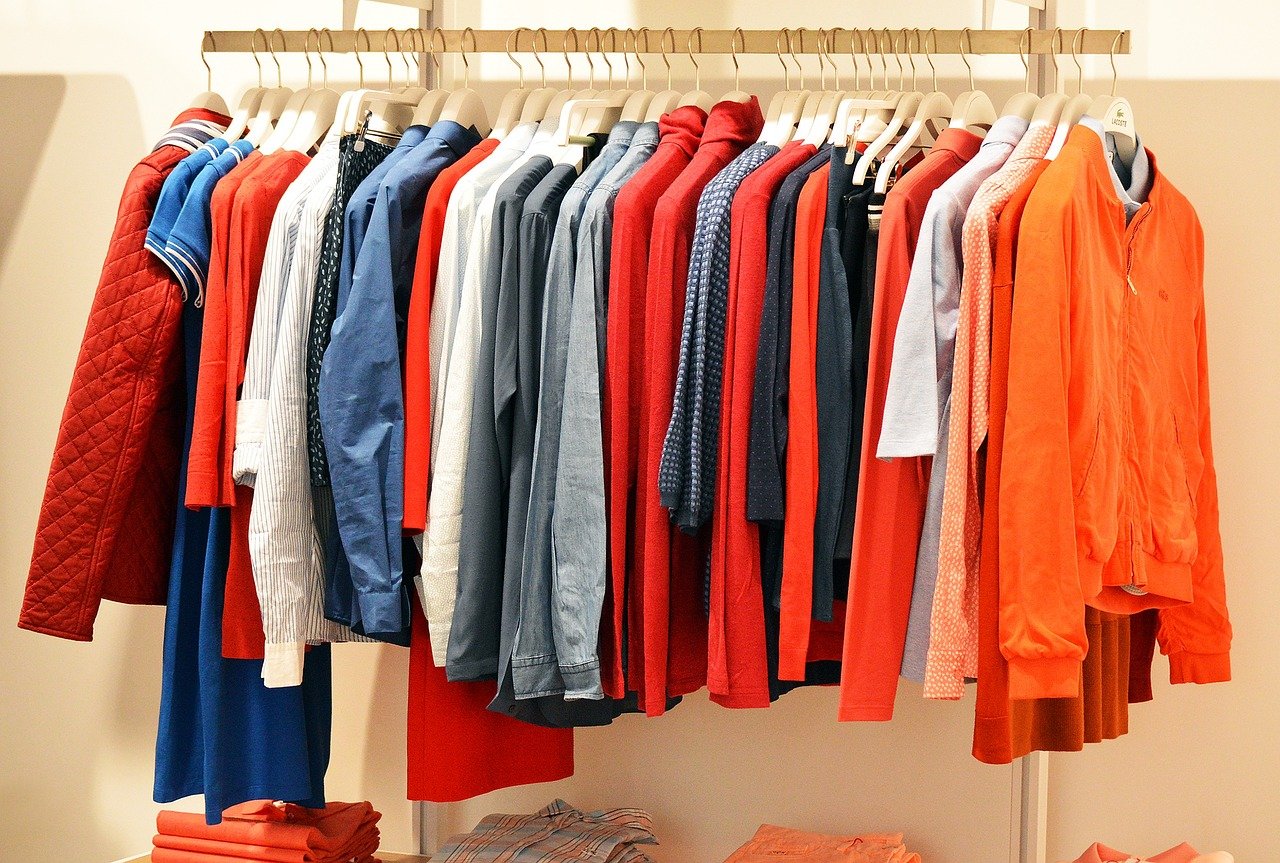What is the Difference Between Style and Fashion | 2024 Tips?

Introduction to Fashion and Style
Fashion and style are integral aspects of human expression and cultural identity. Understanding the nuances between the two helps illuminate their roles in our lives and society.
What is Fashion?
It encompasses a wide range of that are popular at a particular time among a specific group of people. Fashion is not just about clothing; it embodies cultural and social influences, reflecting the zeitgeist of a period. It evolves continuously, driven by factors like media, celebrities, socio-economic conditions, and technological advancements.
What is Style?
Style transcends trends; it reflects a person’s personality, preferences, and values. Unlike fashion, which changes rapidly, style is about consistency and authenticity. Developing one involves understanding what suits one’s body type, and personality, and then curating a wardrobe that reflects these aspects. Style can be classic, eclectic, minimalist, or avant-garde, depending on individual tastes and influences.
In essence, while fashion sets trends and dictates what’s currently popular, style is about individuality and personal flair, making each person’s expression unique and meaningful
The Definition of Fashion
Fashion encompasses the prevailing styles in clothing, footwear, accessories, and makeup that are popular at a specific time and place. It represents a collective aesthetic sense shared within a society or a subculture. Fashion is not solely about what people wear but also about the attitudes, values, and aspirations that these choices convey. It serves as a form of self-expression and cultural identity, reflecting societal trends and historical influences.
Fashion Trends vs. Personal Style
Fashion trends are temporary styles or preferences that gain popularity and visibility within a short period. They are often influenced by fashion designers, celebrities, media, and global events. Trends can be fleeting, changing with each season or even faster with the rise of fast fashion. It is about consistency and authenticity, reflecting personal tastes, values, and lifestyle. Personal style evolves but remains distinctive and reflective of the person wearing it, regardless of current trends.
Impact of Fashion on Culture
Fashion plays a significant role in shaping and reflecting cultural values, norms, and identities. It serves as a visual language that communicates social status, belonging, and cultural heritage. Fashion trends often emerge from cultural movements, historical events, and artistic expressions, influencing how people perceive themselves and others. Moreover, fashion fosters creativity and innovation within the design industry while also contributing to economic growth through the global fashion market. In essence, fashion is more than just clothing; it is a dynamic cultural phenomenon that bridges the past, present, and future of societies worldwide.
The Definition of Style
Style refers to the distinctive manner in which individuals express themselves through clothing, accessories, grooming, and overall appearance. Unlike fashion, which is influenced by external trends and changes frequently, style is more enduring and personal. It reflects a person’s unique preferences, personality traits, cultural background, and lifestyle choices. Style is about authenticity and consistency in how one presents themselves to the world, often transcending seasonal trends to maintain a timeless quality.
Personal Expression through Style
Style serves as a powerful form of self-expression, allowing individuals to convey their values, beliefs, and aspirations through their appearance. It goes beyond mere aesthetics to communicate aspects of identity, confidence, and individuality. Personal style enables people to showcase their creativity and personality, influencing how they are perceived by others and how they perceive themselves. It involves making intentional choices about clothing, colors, textures, and accessories that resonate with one’s inner self and align with their self-image.
Building Your Own Style Identity
Building a personal style identity involves self-discovery and experimentation with different fashion elements to find what feels authentic and comfortable. It starts with understanding one’s body shape, preferences, and lifestyle requirements. Developing a signature style requires exploring various fashion inspirations, from historical references to contemporary trends, and blending them into a cohesive and personalized wardrobe. It’s about creating a visual narrative that speaks to who you are and how you want to be perceived.
Ultimately, cultivating your style identity is a journey of self-expression and empowerment, allowing you to embrace and celebrate your uniqueness while evolving with your personal growth and changing tastes.
Certainly! Here’s the section on fashion and style in society, including the influence of fashion icons and the role of social media in shaping trends:
Fashion and Style in Society
Fashion and style are not just personal expressions but also significant cultural phenomena that influence society in various ways.
Influence of Fashion Icons
These individuals possess a unique ability to influence consumer preferences and inspire fashion movements through their public appearances, endorsements, and personal styles. Their choices in clothing, accessories, and overall presentation often become aspirational for their followers, impacting global fashion trends and consumer behavior. Fashion icons serve as trendsetters who redefine norms and push boundaries within the fashion landscape, contributing to the dynamic evolution of style over time.
Role of Social Media in Shaping Trends
In the digital age, social media platforms have revolutionized the way fashion trends are disseminated and adopted globally. Platforms like Instagram, TikTok, and Pinterest have become influential hubs for fashion enthusiasts, brands, and influencers to showcase their styles, share inspirations, and engage with vast audiences. Social media facilitates real-time trend monitoring, enabling fashion trends to spread rapidly across borders and demographics. Influencers and content creators wield significant power in shaping consumer perceptions and purchasing decisions by endorsing products, collaborating with brands, and promoting emerging trends. Moreover, social media democratizes fashion by providing a platform for diverse voices and niche communities to express their unique style perspectives, fostering inclusivity and innovation within the industry.
Fashion and style in society are thus intertwined with the influence of icons and the transformative role of social media, continuously reshaping cultural norms and perceptions of personal identity through clothing and aesthetics.
Certainly! Here’s the section on understanding the difference between fashion and style, including definition clarification and how they intersect and differ:
Fashion vs. Style: Understanding the Difference
Fashion and style are often used interchangeably, but they represent distinct concepts that play different roles in personal expression and cultural dynamics.
Definition Clarification
It is influenced by various factors such as designers, media, celebrities, and societal influences. Fashion trends are transient and can change rapidly, reflecting the evolving tastes and preferences of consumers.
Style, on the other hand, is more enduring and personal. Style transcends trends; it reflects a person’s unique personality, values, and lifestyle choices. Style is about consistency and authenticity in how one presents themselves to the world, often maintaining a timeless quality that is not dictated by seasonal trends.
How They Intersect and Differ
Fashion and style intersect in that both involve clothing and personal appearance. Fashion sets the trends that dictate what is popular at a given moment, influencing the availability and design of clothing in stores. Style, however, involves individual choice and interpretation of these trends. Someone with a strong personal style may selectively incorporate fashion trends into their wardrobe while maintaining a distinct overall look that aligns with their personality.
While fashion is external and influenced by external factors like designers and media, style is internal and reflects an individual’s self-awareness and self-expression. Style evolves with personal growth and experiences, whereas fashion evolves with seasons and trends in the industry.
Understanding the difference between fashion and style allows individuals to navigate their wardrobe choices consciously, balancing current trends with personal authenticity and expression.
Certainly! Here’s the section on the historical evolution of fashion, including fashion through the decades and major shifts in fashion trends:
Historical Evolution of Fashion
Fashion has evolved significantly over centuries, influenced by social, cultural, political, and economic factors. Understanding its historical context provides insights into how trends have shaped and reshaped over time.
Fashion through the Decades
18th and 19th Centuries
In the 18th and 19th centuries, fashion was characterized by elaborate garments for the aristocracy and upper classes. Styles were often dictated by royalty and aristocratic courts, with intricate fabrics, corsets, and structured silhouettes symbolizing wealth and social status.
Early to Mid-20th Century
The 1920s introduced the flapper style, characterized by shorter hemlines and looser, more relaxed silhouettes. The 1940s and 1950s saw a return to elegance and femininity, with Christian Dior’s “New Look” defining post-war fashion with full skirts and nipped-in waists.
1960s to 1980s
The 1960s brought about the revolutionary mod style and the rise of youth culture, with icons like Twiggy and the Beatles influencing fashion with bold colors, mini skirts, and geometric patterns. The 1970s embraced bohemian and disco styles, featuring bell-bottoms, platform shoes, and eclectic patterns. The 1980s introduced power dressing with shoulder pads, bold colors, and exaggerated silhouettes, reflecting a booming economy and cultural shifts.
1990s to Present
The 1990s saw a blend of grunge fashion with minimalist influences, characterized by flannel shirts, ripped jeans, and Doc Martens. The turn of the millennium brought about a mix of nostalgia and innovation, with fashion becoming more eclectic and individualistic. The 21st century has seen rapid globalization and digitalization influencing fashion trends, with a focus on sustainability, inclusivity, and technology-driven designs.
Major Shifts in Fashion Trends
Fashion trends undergo major shifts in response to societal changes, technological advancements, and cultural movements. For instance, the Industrial Revolution enabled the mass production of clothing, democratizing fashion beyond the elite. The rise of social movements like feminism and LGBTQ+ rights has influenced fashion to become more gender-fluid and inclusive. Technological innovations in fabrics and manufacturing have led to sustainable practices and futuristic designs.
Fashion continues to evolve, reflecting the complexities of contemporary society and the diverse expressions of individuality. Each era leaves its mark on fashion, shaping trends and redefining style in response to the ever-changing world.
Cultural Significance of Fashion and Style
Fashion and style serve as powerful reflections of cultural identity, societal values, and historical contexts, shaping how individuals and communities express themselves and interact with the world.
Fashion as a Cultural Mirror
Fashion acts as a dynamic mirror that reflects the cultural, social, and economic landscapes of societies. It embodies traditions, beliefs, and customs unique to different cultures, serving as a visual narrative of cultural heritage and identity. For example, traditional clothing worn during ceremonies or festivals often symbolizes spiritual beliefs or historical events, preserving cultural continuity and identity across generations.
Moreover, fashion adapts and evolves in response to cultural shifts and societal changes. It can challenge norms, provoke discourse, and celebrate diversity by embracing cultural influences from around the globe. Fashion designers and brands increasingly incorporate elements of multiculturalism and inclusivity in their collections, promoting cross-cultural understanding and appreciation.
Globalization’s Impact on Style
Globalization has profoundly influenced the evolution of style by facilitating the exchange of ideas, trends, and practices across borders. The interconnectedness of the global economy and advancements in technology have accelerated the dissemination of fashion trends and styles worldwide. Fashion capitals like New York, Paris, Milan, and Tokyo serve as hubs where diverse cultural influences converge, shaping global fashion trends and consumer preferences.
Globalization has also sparked debates about cultural appropriation versus cultural appreciation in fashion. While cultural exchange can foster creativity and mutual understanding, it is essential to respect and acknowledge the origins and significance of cultural symbols and practices. Fashion has the power to bridge cultural divides and promote cultural diplomacy when approached with sensitivity and respect for diverse perspectives.
In essence, fashion and style play integral roles in preserving cultural heritage, fostering creativity, and promoting cultural exchange in an increasingly interconnected world. They celebrate the richness of human diversity while reflecting the ever-changing dynamics of global society.
Certainly! Here’s the section on the psychological aspects of fashion and style, including self-perception and clothing choices, as well as fashion’s role in confidence building:
Psychological Aspects of Fashion and Style
Fashion and style have profound psychological implications, influencing how individuals perceive themselves and interact with the world around them.
Self-Perception and Clothing Choices
Clothing choices play a significant role in shaping self-perception and identity. What we wear can impact our mood, behavior, and self-confidence. Individuals often select clothing that aligns with their self-image, aspirations, and cultural affiliations. For example, wearing professional attire can enhance feelings of competence and authority in professional settings, while casual or expressive clothing may reflect personal values and preferences.
Moreover, clothing can serve as a form of self-expression, allowing individuals to communicate aspects of their personality, mood, and creativity. The colors, textures, and chosen convey non-verbal messages to others, influencing social interactions and perceptions.
Fashion’s Role in Confidence Building
Fashion plays a crucial role in building self-confidence by empowering individuals to express their unique identities and embrace their bodies. When people feel comfortable and stylish in their clothing choices, they often experience a boost in self-esteem and assertiveness. Fashion enables individuals to experiment with different looks, discover their personal preferences, and cultivate a positive self-image.
Furthermore, fashion can challenge societal beauty standards and promote body positivity by celebrating diverse body shapes, sizes, and identities. An industry that is more accepting and inclusive is fostered by inclusive fashion campaigns and the inclusion of varied models.
Ultimately, fashion and style are not just about outward appearance but also about internal perception and self-acceptance. By embracing fashion as a tool for self-expression and empowerment, individuals can enhance their confidence and embrace their unique identities more authentically.
Fashion Industry Insights
Understanding its economic impact and evolving practices like sustainability is crucial in today’s context.
Economic Influence
The fashion industry is a major economic driver, contributing significantly to global GDP and employment. It encompasses a complex network of designers, manufacturers, retailers, and marketers, creating millions of jobs globally. Fashion weeks and trade shows in cities like New York, Paris, and Milan attract billions in revenue annually, showcasing the industry’s economic vitality.
Moreover, consumer spending on apparel and accessories fuels economic growth and drives retail sales. The fashion market responds swiftly to consumer demands and trends, making it a barometer of consumer confidence and economic health. The industry’s ability to adapt to digital platforms and e-commerce has further expanded its global reach and revenue potential.
Sustainability and Ethical Fashion
In recent years, sustainability and ethical practices have emerged as critical issues within the fashion industry. Concerns about environmental impact, labor conditions, and supply chain transparency have prompted calls for greater accountability and sustainability initiatives.
Fair labour methods, secure working conditions, and supply chain transparency are all supported by ethical fashion.Brands are increasingly adopting sustainable sourcing methods, using eco-friendly materials, and reducing carbon footprints to minimize environmental harm. The rise of circular fashion models, such as recycling and upcycling, aims to reduce waste and promote longevity in garment lifecycles.
Consumers are becoming more conscious of their purchasing choices, favoring brands that prioritize sustainability and ethical practices. This shift has prompted industry leaders to innovate and collaborate on sustainable solutions, fostering a more responsible and resilient fashion ecosystem.
By integrating economic growth with sustainability goals, the fashion industry can drive positive change and contribute to a more equitable and environmentally conscious future.
Conclusion
The future of fashion is set to be an exciting blend of technological innovation, sustainable practices, and ever-evolving trends. With advancements in wearable technology, smart fabrics, and digital fashion, consumers will experience a more personalized, interactive, and eco-friendly approach. As designers and brands continue to push the boundaries of creativity and technology, the fashion industry will not only adapt to but also shape the future, ensuring that fashion.




